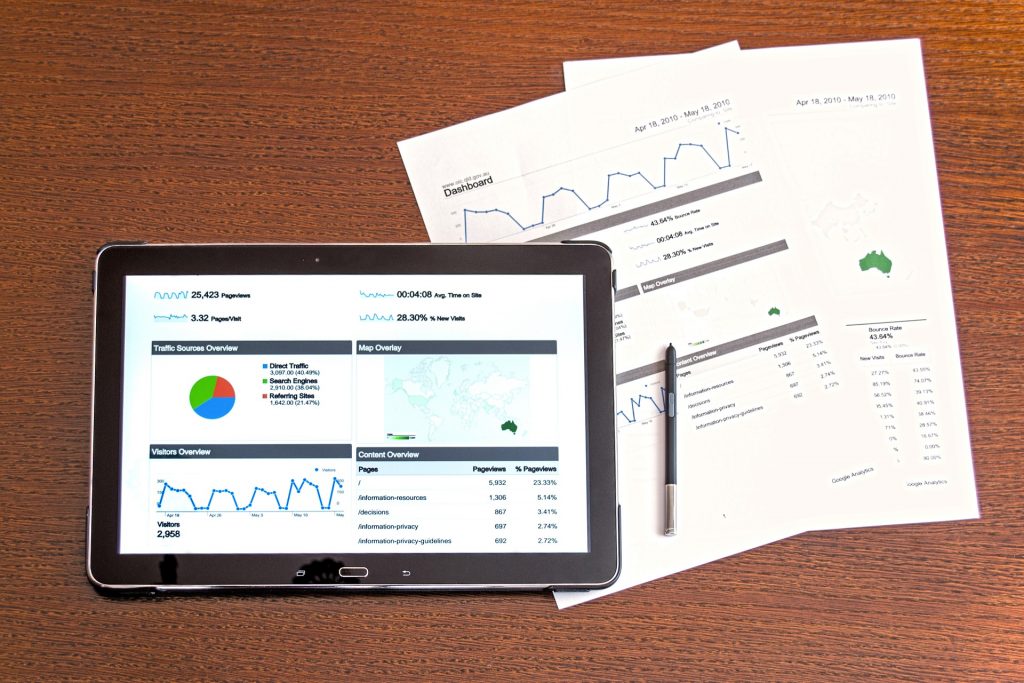
The 10 top metrics for analyzing content marketing
Analysis has to be a part of any successful content marketing plan. We have to take the time to evaluate how our campaigns and assets are performing in order to replicate that success in the future or change our tactics.
But, logging into analytics dashboards can be overwhelming when seeing all the different data points available.
If you’re looking for the most important content marketing metrics to track, I’ve narrowed it down to my top 10 that I use to evaluate how my content marketing efforts are performing.
From user behavior metrics to engagement insight, you can easily use free tools like Google Analytics, Google Search Console, and social media insights tabs to learn more about your audience and what content pieces they love and what content types it’s time to retire.
10 content marketing metrics you must measure

1. Traffic
To me, the most important one is making sure people are actually looking at your content! There will be no other data to look at if people aren’t even making it to your site. Use page views to see what content’s popular and getting clicks and what content needs some TLC.
To see how much traffic your site is getting you can check your Home screen of Google Analytics or go to Behavior > Overview.
2. Traffic sources
You should know how people are getting to your content to evaluate its effectiveness and how well you’re doing with your content promotion strategy.
Organic traffic should be your dominant traffic source as it means your content is being found natively and it’s optimized for the right keyword terms – unless your bounce rate is high, but we’ll talk about that.
Referral, social, and email also provide further insight into what topics your audience is interested in so you can capitalize on that topic and share more on it on social and within your content to give your audience what they want.
To see where your traffic is coming from, go to Google Analytics > Behavior > Overview.
3. Time on page
Now that you know how many people are visiting your site and where they’re coming from, it’s time to get an idea of how engaged they are with your content and an easy way to do that is to see how long they’re spending on each page.
The longer they stay, the more interested they are. If you have a chasm between your best performing page and your worst, you might want to run some heat mapping tests to see where people are spending their time or why they’re not spending time on other pages and figure out how to optimize those pages to increase the time spent on the page.
See time on site in Google Analytics, Behavior > Site Content > Landing Pages
4. Bounce rate
Bounce rate is another great engagement metric as you can see what content makes people stay and what content scares them away. Concentrate on pages with high bounce rates and see where the disconnect is coming from, unless it’s a thin content page like a Contact Us page where the user got the info they wanted and then bounced.
High bounce rates can mean the content doesn’t match the keywords, doesn’t answer the user’s query, or has outdated or bad information. Make sure your pages have quality content and their keywords match what the page is about.
How to find bounce rate in Google Analytics: Behavior > Site Content > All Pages
5. Pages/session
Find out how many pages users are looking at each time they visit your site to see how much they like the content on your site.
The more pages they’re visiting, the more they’re learning about your brand and engaging with your business.
6. Funnel
Along the lines of looking at how many pages/session users are checking out, take a look at the funnel and see how they progress through your site to learn more about their customer journey and how they navigate your website.
See your funnel in Google Analytics: Behavior > Behavior Flow
7. Conversions or events
If you’re an ecommerce site, obviously you’ll want to track your conversions and see how content on your site is turning those prospects into customers.
But, if you don’t sell stuff online, you can still use event tracking or goals to see how people sign up for your emails, request a demo, or download a piece of content.
Understand what pages help convert visitors and how you can use that content elsewhere in their customer journey.
Use Google Analytics’ Conversions tab to track ecommerce conversions or goals.
8. Social signals & backlinks
I’m lumping social media engagement, brand mentions, and follower growth under the social signals umbrella. If you’re publishing and promoting good content it logically follows that you’ll see good engagement when you share it on social media and that you organically see a growth in your following.
I like to track social media reach, clicks, shares/RTs, comments, brand mentions, and follower growth as good indicators that social is performing well.
In a similar vein to social shares, you’ll want to see who’s linking back to your site as links are still a very important part of how your site performs in the search engines, with more quality links meaning a better ranking.
See who’s linking to your site: Google Search Console > Links
9. Email engagement
Like social media, if you’re known for sharing valuable content you should see a growth in how users interact with your email campaigns and how many new subscribers you’re getting. Track open rates to learn what subject lines work with your audience, clicks to see what content they want to read, and subscribe rates to track growth.
Most email marketing tools have their own analytics data to find these metrics.
10. Audience demographics
I’ve mentioned buyer personas before, and knowing your audience is a very important part of your content marketing. By knowing their sex, their age, where they live, and related interests, you can make sure your content is tailored for them.
Another way to use audience demographics is to look at your new vs. returning users. Keep returning users (most likely customers) coming back for more and keeping them engaged with your brand.
All in all, here’s a rundown of content marketing metrics to measure:
- Traffic
- Traffic sources
- Avg. time on page
- Bounce rate
- Avg. pages/session
- Conversion rate
- Social media reach
- Social media engagement rate
- Email open rate
- Email click-through rate
What metrics do you measure for content marketing? Share with me in the comments below!




